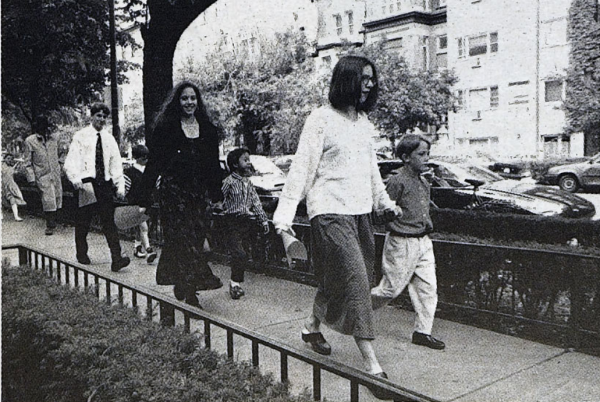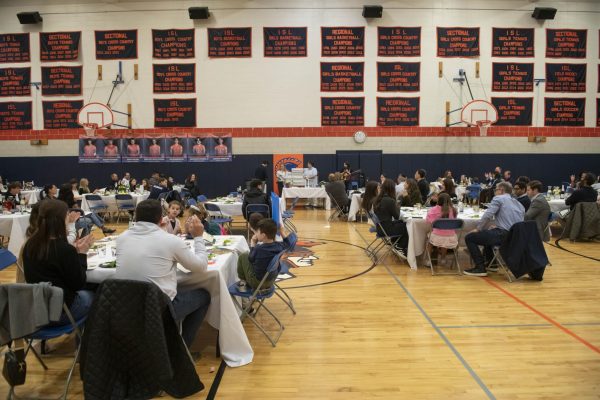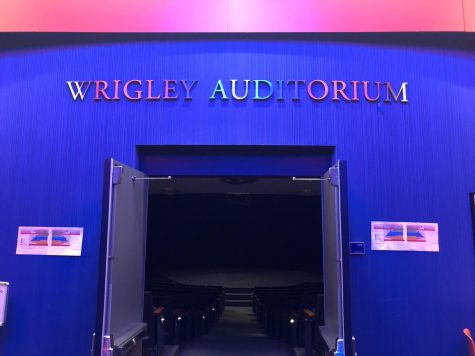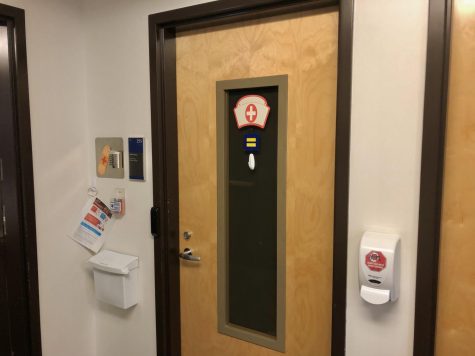Students and Administrators Talk Accessibility at Latin
Latin’s Facilities Master Plan and Chronic Illness Disability Alliance push for further accessibility at the school
As conversations around Diversity, Equity, and Inclusion (DEI) continue to surface at Latin, accessibility is on the mind of many community members, and so is the progress it represents. From long-term plans to students and faculty members’ dedicated feedback, physical accessibility is an ongoing part of many administrative initiatives, and in turn, an area of passion for students and faculty members.
From the administrative perspective, Latin is no stranger to making changes to buildings for its physical accessibility. Director of Operations Chanel King said, “About eight years ago when we reconstructed the [Upper School] lobby, we added an elevator which provides [Americans with Disabilities Act (ADA)] access from the lobby to the first and second floors. Previously, we had a lift that only served the upper and lower pit on the south end of the lobby.”
These accommodations, while important to administrators, are often difficult to execute due to structural challenges. Ms. King said, “Of course, we have work to do with our older facilities, such as the theater in the [Upper School] and the bathrooms in the [Lower School], but this is something we plan to address as we build out our Facilities Master Plan.”
Additionally, accommodations are often unique to particular students. “We handle students on a case-by-case basis,” Ms. King said. “Usually, they need simple assistance like elevator access or an assigned friend to help carry their books. We can help with that easily.”
However, the complexity and individuality of accessibility can create challenges as well. Director of Alumni Programming and Archivist Teresa Sutter, who serves as advisor to the Chronic Illness and Disability Alliance (CIDA), said, “Accessibility is personal and will vary with the individual, so the administration, facilities team, faculty and staff will need to intentionally prioritize inclusion and accessibility and work with each individual to meet their needs.”
Ms. King said, “We are always looking to improve our facilities in ways that make sense for the ever-changing world. Changes to buildings are often structural, which is never an easy fix. But we do plan to address things like ADA compliance, gender-neutral environments, etc. in our Facilities Master Planning process.”
The Facilities Master Plan, an ongoing effort to expand Latin’s physical accessibility, strives to, as stated on the school’s website, “Enhance or redesign Latin’s campus and facilities and align resources to achieve our vision for educational excellence.”
Ms. King continued, “We have a whole team of people who make decisions around building changes. Our Facilities Committee is composed of Board members, including the Board Chair, and staff members, including the Head of School.”
These accommodations are vital to achieving Latin’s DEI goals. As Ms. Sutter put it, “Chronic illness is unrelenting and seeps into every area of a student’s life from classroom performance to peer-to-peer interactions. Without the proper accommodations and accessibility, you feel like you are constantly two steps behind.”
However, as Latin’s website states, “The master plan is a long-term view of facilities and may be implemented over several years,” leading current students to continue to grapple with Latin’s accessibility, and in particular, many of its shortcomings.
Senior and the sole head of CIDA Megan Riordan said, “Accessibility has a long way to go at Latin, both in acceptance [and] acknowledgment and in population. I did not join CIDA when I started at Latin in ninth grade. I did not want my introduction to a new school and new people to be solely focused on my chronic illness.”
Concerns surrounding accessibility at Latin are not limited to CIDA members, though, as students who are not members of the affinity have hopes for progress at Latin as well. Freshman Sarina Weinberg said, “I think there’s always more that could be done.”
Latin is not alone in its needed changes—according to a U.S. Government Accountability Office report, “About two-thirds of school districts identified barriers that may limit access for people with disabilities in a quarter or more of their school facilities.” Furthermore, the same report found that nearly one-fifth of schools were built before 1992—the year ADA regulations went into effect—and have not undergone renovations since.
Although accessibility is a problem across the globe, Latin’s selective environment can contribute to feelings of exclusion among some members of its disabled community. Megan said, “There are boundaries to face in being a disabled student at a selective high school, especially an institution like Latin, skewing the population and often excluding people with chronic illnesses.”
Along with Latin’s other identity-based organizations, CIDA strives to create a supportive space for students with chronic illnesses and disabilities. Megan said, “Having CIDA, Latin’s [CIDA], I am able to be with people who understand what living with a chronic illness is like, even if we are experiencing it in different ways.”
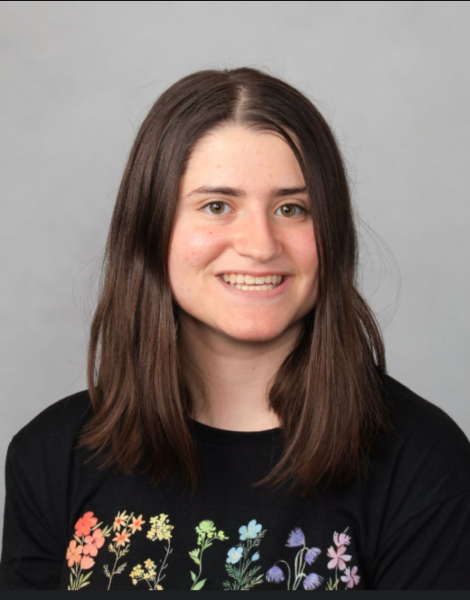
Scarlet Gitelson (‘26) is delighted to be serving as one of this year’s Editors-in-Chief. Using her writing, she seeks to promote connection and discourse...















































